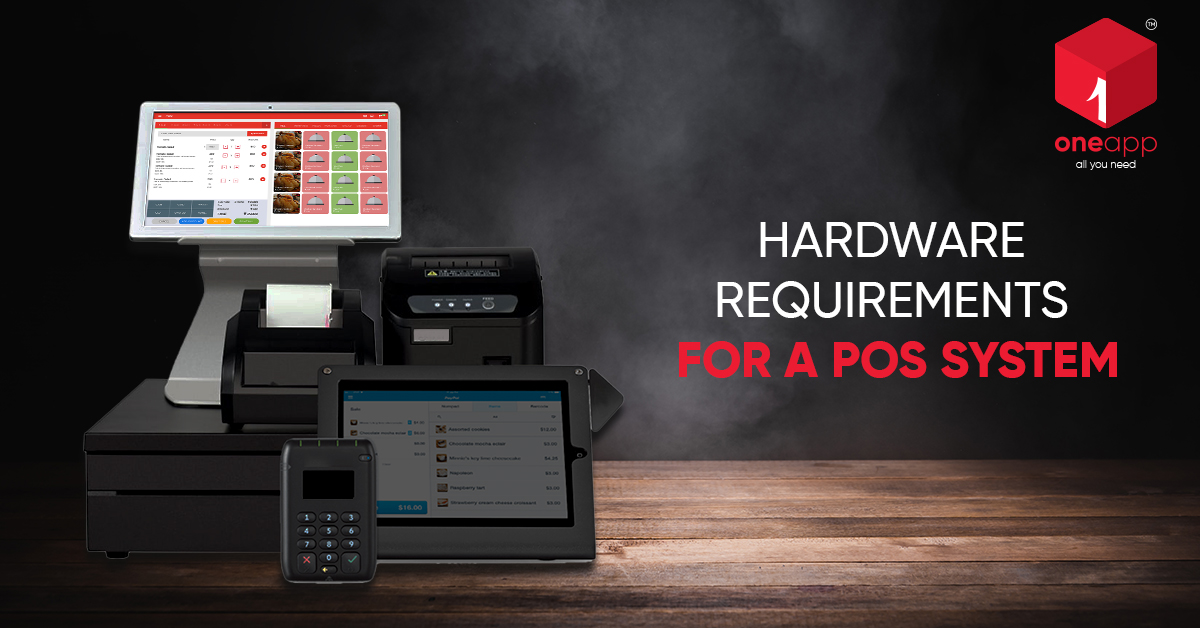In this blog, we are going to form an idea about what kinds of hardware a business may require to run their POS system. It should be noted that not all of these are a requirement for all businesses, but it varies largely depending on the type and size of your business. So let’s get started:
BASIC HARDWARE (USED STANDARDLY IN BUSINESSES)
POS terminal with display screen: This is the main device containing the POS software and allows the POS to be used, operated and regulated. It comes with a display screen. New age POS terminals are mostly touchscreen which eliminates the use of mouse and keyboard as extra components. Many terminals also come with inbuilt printers as well. However, many businesses use separate printers with their POS terminals as well.
Thermal Printers: Thermal printers are bill printers that use thermal energy to imprint. These printers are mostly used as standalone printers attached to the POS terminals. There are two types of thermal printer available- Direct and Transfer. Direct thermal printers use heat energy and burn the image onto the special thermal paper whereas transfer thermal printers use a ribbon containing wax or resin and make prints by transferring the heated wax or resin in the thermal papers. These printers are economical and work faster and with negligible noise.
Pole Display: Pole Display as the name suggest is a display counter mounted on a pole that displays the items and price information to the customers. However, there is two-sided pole display available as well that shows information both towards the customer and also the salesperson. Pole display also comes with a weight scale to measure the amount of an item. Some displays don’t stand in a pole but sit on a tabletop which can be called table-top display. These are standalone product and can be bought separately and attach to the POS terminal. However one needs a follow the compatibility with the POS terminal which can be guided by the POS providers.
Barcode Scanner: These are generally hand-held laser light technology-based device that reads the bar code stuck in a product. By reading the unique code, the system shows its retail price as fixed by the business and also update the sale of the item in the inventory. Some businesses also use a flatbed scanner that uses the same light technology to read the unique code of a product but is fixed in the tabletop. The product needs to be placed at its light source target to get read.
Barcode Label Maker: A bar code label maker is simply a specialized printer that is capable of printing bar codes using a thermal printing method. The software to generate these various bar code schemes is built into the controller firmware of the specific printer however the software to direct what to print is typically included with the POS software.
Magnetic Stripe Reader: Magnetic Stripe Reader is also popular with its abbreviated name MSR and is a must devise if a business accepts credit and debit cards for settling payments. MSR reads the magnetic stripe present in the customer’s payment card and retrieves information for settling the payment. There are one-stripe, two-stripe and three-stripe readers available in the market, though these days almost all the businesses use three-stripe readers. A two-stripe reader allows the business to get both account numbers and names from the card whereas a three-stripe reader can have customized information on the third stripe. MSRs comes with a number pad to punch in a PIN number to complete the payment process.
Cash Drawer: Cash drawers are the place where cash, checks, and changes are stored. However, in modern days, the cash drawers are linked electronically with the POS. Cash drawers are generally purchased as a peripheral plug-in device to the POS system since not all establishments require them, but in some cases, they are built-in to the POS hardware solution. A good cash drawer should ideally be an all-steel made and should be able to withstand extremes of heat, cold or humidity.
SPECIAL HARDWARE (USAGE DEPENDS ON BUSINESS TYPE)
Check reader: This is required by a business that accepts check as a mode of settling payment. Check Reader is formally known as MICR i.e. Magnetic Ink Character Recognition and uses technology to verify that checks are valid or not forged. A special ink that is sensitive to the magnetic fields is used in printing the encoded characters that certify its originality, like the one printed at the bottom of the check. MICR reads the characters and verifies the originality.
Scale: This is required by the businesses, mainly retail businesses, that sell products based on weight. The scale comes with a plate to hold the product being weighed and a pole display to display the result.
Impact Printers: These are another kind of printers that are used in businesses that need to print without heat or print a two-ply receipt or need to print in color, which a thermal printer can’t. These, however, do not work as fast as a thermal printer.
Note that many of these devices can be purchased individually and attached to the POS terminal, however, the key is to make sure that you are purchasing one that is compatible with your POS software. CubeOne POS software is compatible with numbers of hardware options, to check the list, please go to https://www.cubeonebiz.com/hardware/pos-hardware.php
